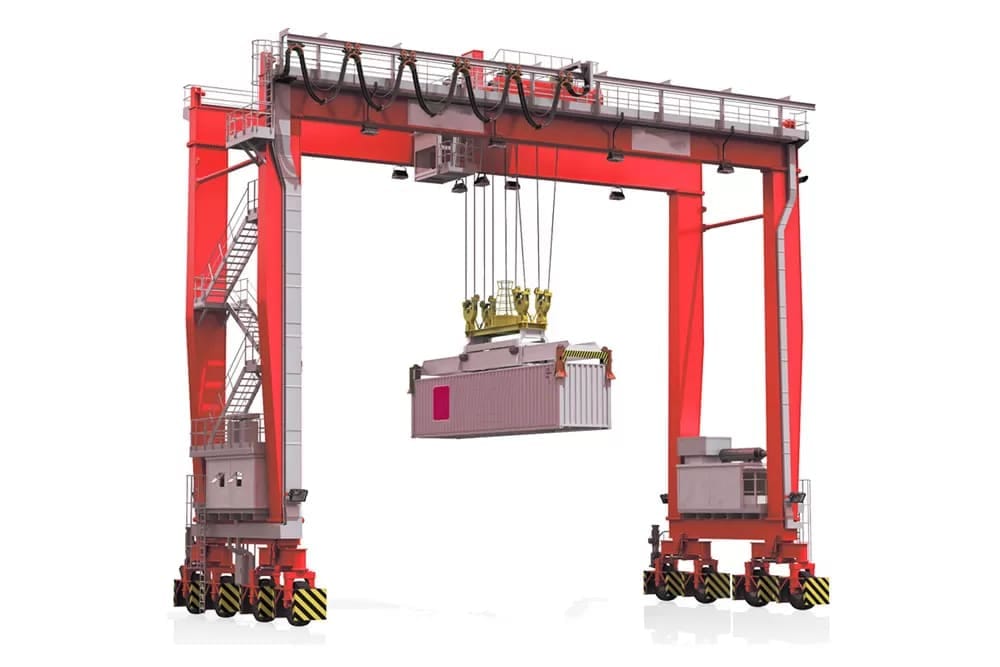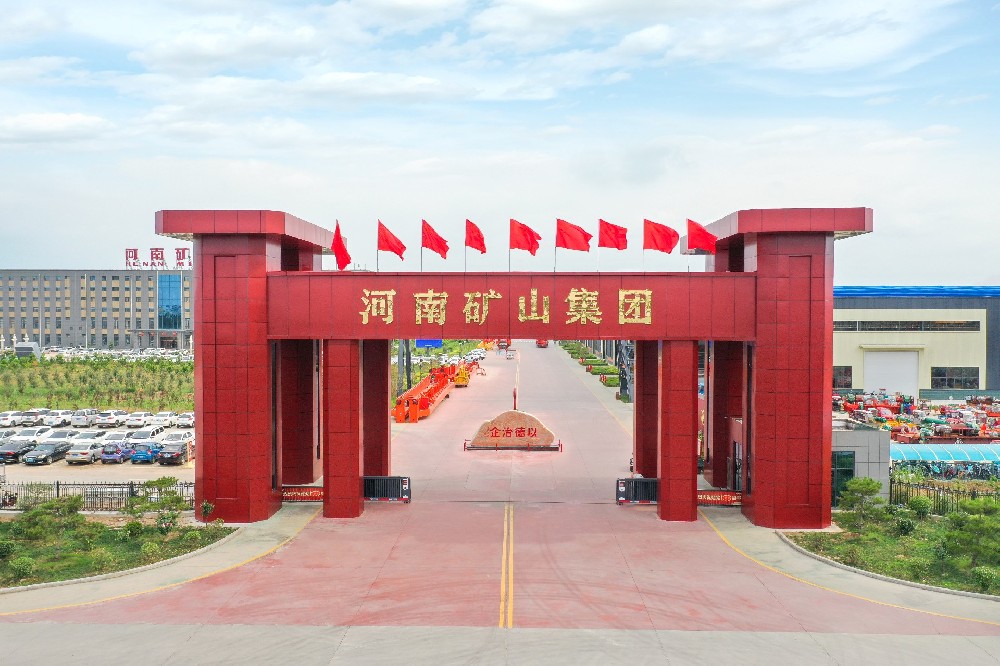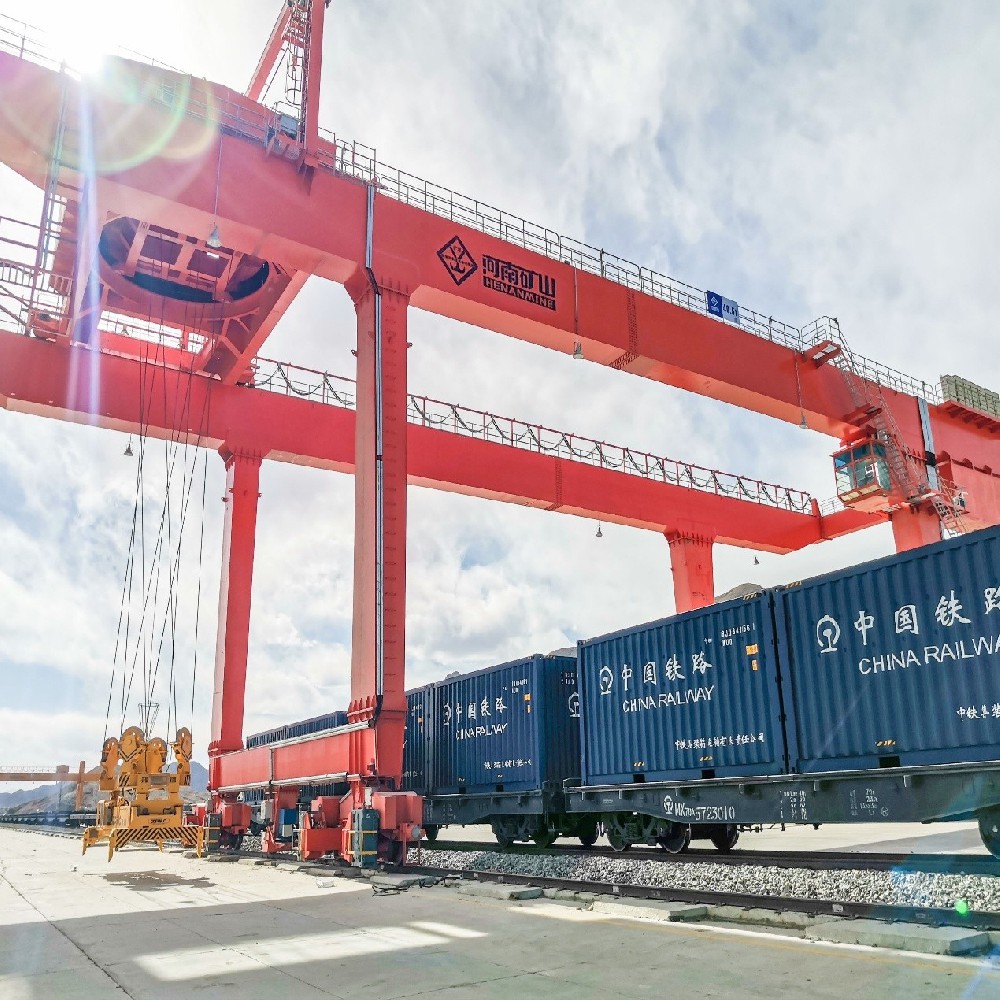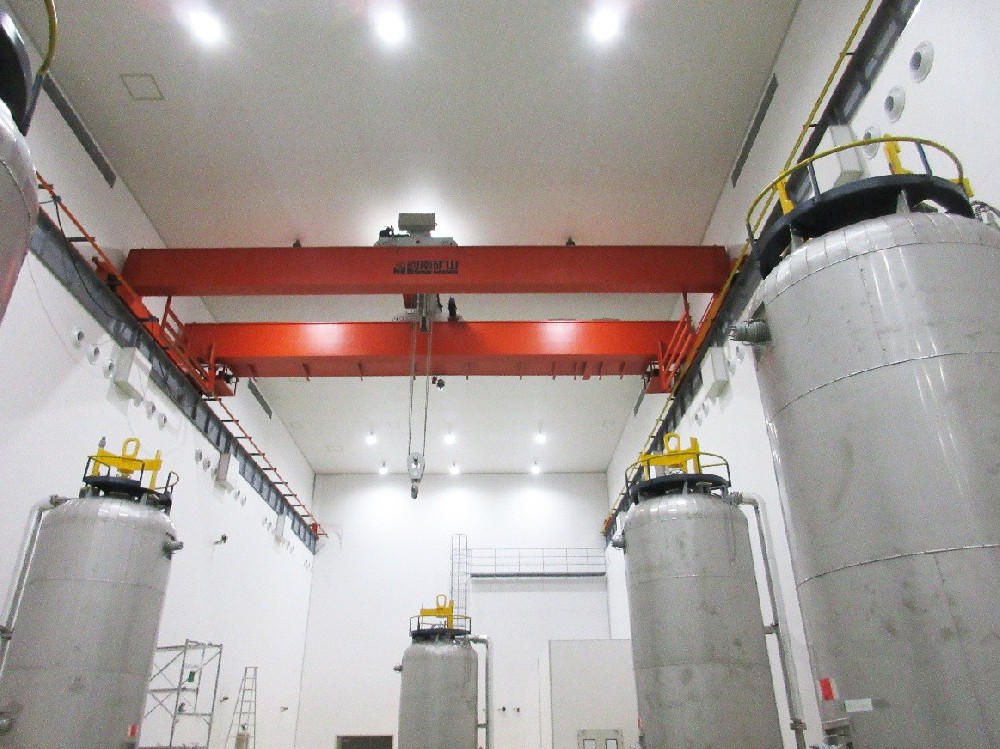- How to Select a Portal Crane for Port Terminals: From Operational Requirements to Maximizing Efficiency
-
Release Time:2025-08-20 15:00:29Share:
How to Select a Portal Crane for Port Terminals: From Operational Requirements to Maximizing Efficiency
As a versatile lifting device for port terminals, portal cranes play an irreplaceable role in scenarios such as bulk cargo handling, general cargo lifting, and container transshipment, thanks to their 360° rotating operational radius, flexible boom performance, and powerful load-bearing capacity. For port terminals, selecting the right gantry crane can not only improve operational efficiency by over 30% but also reduce long-term operational costs. However, different ports have significant variations in cargo structure, berth conditions, and operational intensity. How should we precisely match these requirements?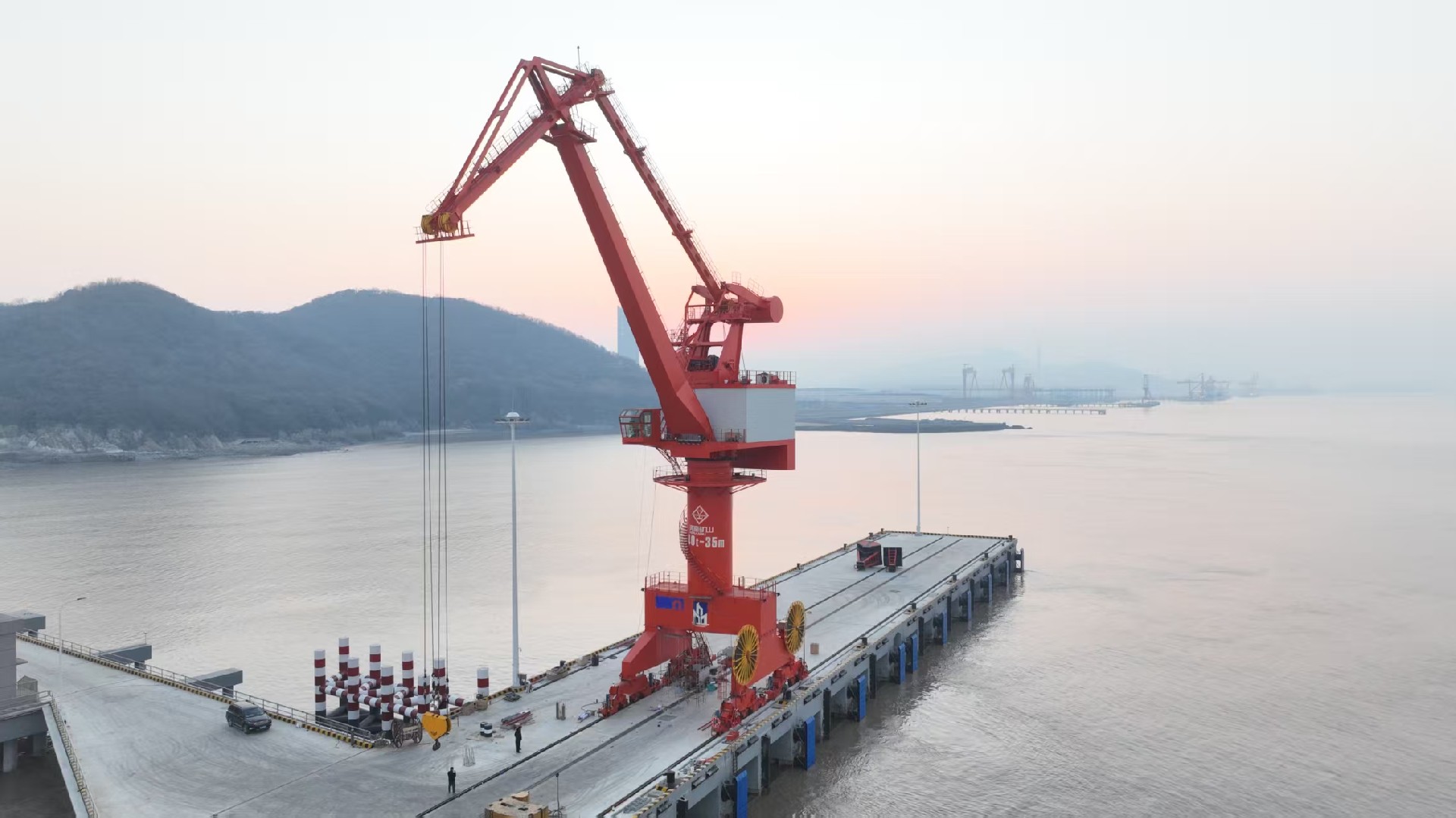
Step 1: Identify Core Operational Scenarios and Match Machine Functionality
Port terminals have complex and diverse operational scenarios, so the selection of gantry cranes must first clarify the primary business focus and then tailor functional configurations accordingly.
Terminals primarily handling bulk cargo: Focus on high capacity + continuous operation
Bulk cargo such as coal, ore, and grain accounts for over 40% of port throughput. Gantry cranes at such terminals must possess high-frequency cyclic operation capabilities and the ability to handle heavy loads:
Grab selection is critical: Choose grab types based on bulk cargo density — low-density materials like coal and grain are suitable for 10-30m³ four-rope grabs (e.g., the wear-resistant grabs standard on Henan Mining's MG-type gantry cranes, which use Mn13 high-manganese steel bodies, extending service life by 2x compared to ordinary steel); For high-density materials like ore, hydraulic double-jaw grabs with a closing pressure of ≥20 MPa are required to ensure secure handling without spillage.
Work class must not be too low: Continuous-operation bulk cargo terminals should select gantry cranes with an A7 or higher work class. Such equipment uses H-class insulation for the hoisting motor and is equipped with automatic wear compensation devices for the brakes, capable of withstanding 16 hours of full-load operation daily and an annual workload exceeding 1 million tons.
Dust protection must be adequate: In dust-prone environments such as coke and mineral powder handling, enclosed cabins (with positive pressure ventilation systems to prevent dust ingress) and dust covers for grab unloading must be provided. The electrical system must have an IP65 protection rating, with dust covers installed on core components such as motors and contactors to prevent dust accumulation causing short circuits.
General cargo and heavy-lift terminals: Enhanced precision control + compatibility with multiple lifting devices
Steel, large equipment, wind turbine blades, and other general cargo have irregular shapes, with some heavy cargo weighing 50–200 tons, placing extremely high demands on the flexibility and positioning accuracy of the crane's lifting equipment:
The lifting equipment system must be “universal”: in addition to the standard hook, it must support quick-change attachments such as container lifting equipment, steel plate clamps, and electromagnetic suction cups (changeover time ≤ 10 minutes). For extra-long steel materials (e.g., 60-meter wind turbine blades), customizable telescoping auxiliary booms (extension length 3-8 meters) can be used in conjunction with 360° rotation functionality to achieve “one lift, multiple pieces” combined lifting, reducing the number of operational cycles.
Micro-motion performance is core: The hoisting mechanism must have a low-speed gear of 0.5-1 m/min, combined with a variable frequency speed control system to achieve “millimeter-level” control. For example, when lifting a 200-ton ship engine, the load-sensitive hydraulic system precisely adjusts the flow rate to ensure alignment error ≤5 mm, preventing equipment collision damage.
Structural strength must be redundant: The boom is welded using Q690 high-strength steel, with a section modulus 30% higher than that of ordinary gantry cranes. When lifting eccentric loads (swing angle ≤3°), the boom stress real-time monitoring system automatically issues warnings to prevent structural overload deformation.
Multi-functional comprehensive terminal: Emphasizing quick switching + intelligent adaptation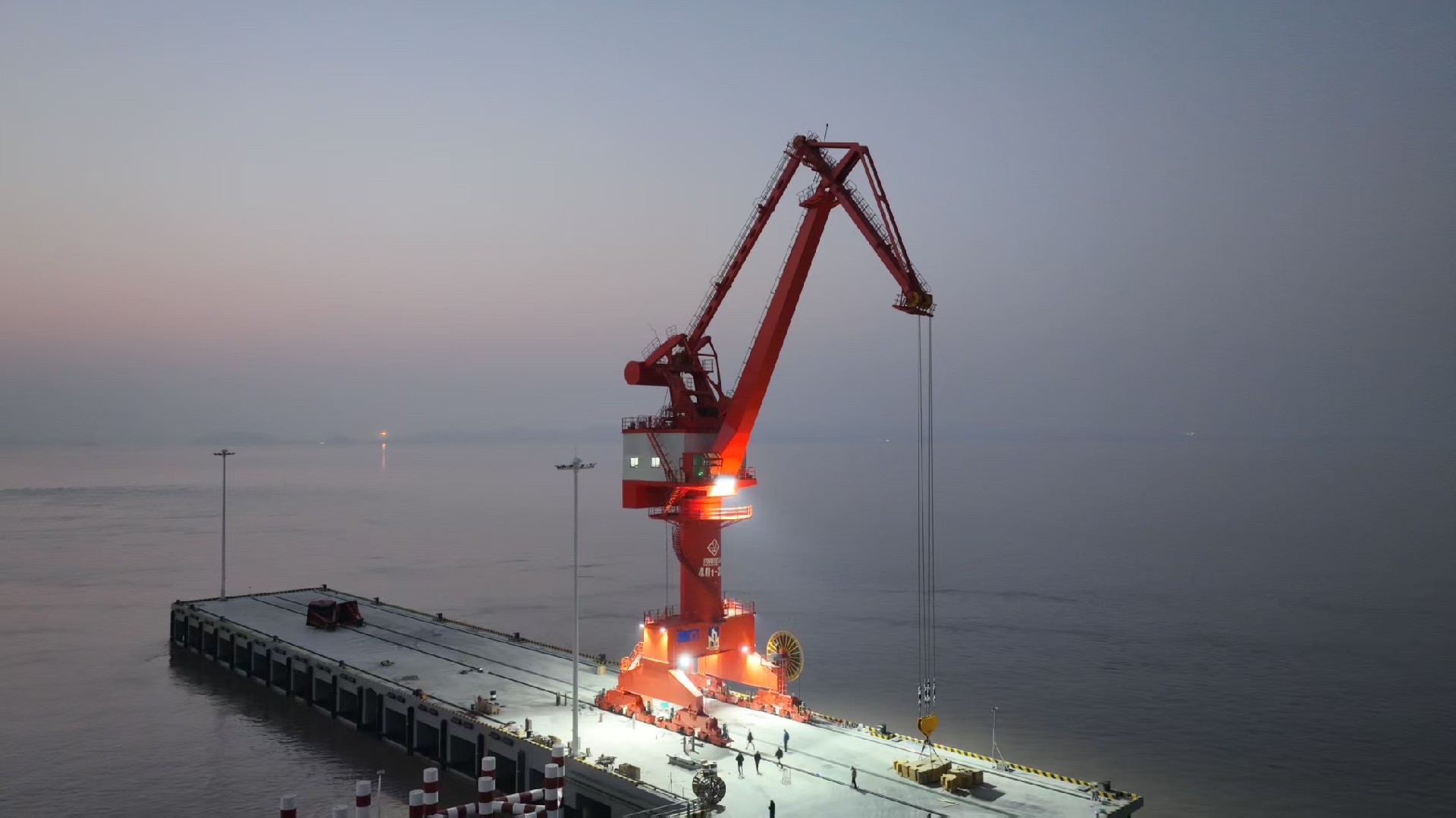
As a comprehensive port handling bulk cargo, general cargo, and containers, the gantry crane must have the ability to “switch operation modes with a single button”:
Dual-mode boom swing speed: Designed with two boom swing speed settings—high-speed (80 m/min) and low-speed (10 m/min)—the high-speed setting enhances efficiency during large-scale cargo transfers, while the low-speed setting ensures stability during precise positioning. Combined with the boom angle memory function, the crane can automatically return to commonly used operating ranges (e.g., directly above a ship's hatch) with a single button press, reducing repetitive adjustment time.
Intelligent systems to “reduce the workload”: Equipped with intelligent mode switching functionality — when switching to “bulk cargo mode,” the grab anti-vibration program is automatically activated; when switching to “container mode,” the lifting device horizontal micro-adjustment (±100 mm) is initiated. No manual parameter re-setting is required, enabling new operators to quickly get up to speed.
Precise energy consumption control: Utilizes counterweight adaptive technology to automatically adjust the counterweight position based on load weight (adjustment range 0-1.5 meters), reducing energy consumption during light loads and enhancing stability during heavy loads, resulting in over 20% overall energy savings.
Step 2: Anchor key parameters to avoid over- or under-performance
Parameter selection for gantry cranes must be tailored to specific needs, avoiding unnecessary costs from pursuing overly comprehensive specifications or performance limitations due to insufficient parameters.
Lifting capacity and reach: Calculate based on the farthest operating point
The lifting capacity of gantry cranes decreases with increasing reach. When selecting a model, use the maximum load at the farthest operating point as the baseline. For example:
If a terminal berth requires lifting a 25-ton container at a 30-meter radius, a model with a lifting capacity of ≥25 tons at a 30-meter radius must be selected (e.g., a 40/5-ton gantry crane, where a 30-meter radius corresponds to a lifting capacity of 30 tons), with a 10% safety margin to handle unexpected overloads.
For heavy-lift terminals requiring the lifting of 100-ton equipment with a working span of 20 meters, a specialized gantry crane with a lifting capacity of ≥100 tons at a 20-meter span must be selected to avoid equipment idling due to insufficient parameters.
Lifting height: Covering all scenarios for ships and yards
Lifting height must simultaneously meet the requirements for ship loading/unloading and yard stacking:
Lifting height above the track surface: Must cover the maximum ship type's hold depth (e.g., for a bulk carrier with a hold depth of 15 meters, the lifting height must be ≥20 meters) to ensure cargo retrieval from the hold bottom even at low tide.
Lifting height below the track surface: For operations below the terminal surface (e.g., container semi-trailer loading/unloading), a minimum of 5 meters is recommended to prevent the lifting device from colliding with ground equipment.
Speed parameters: Balancing “efficiency and safety”
Rotation speed: Should be controlled between 0.8-1.2 r/min. Excessively high speeds can generate centrifugal force causing cargo swaying, while excessively low speeds can disrupt operational rhythm.
Gantry travel speed: 5-10 m/min is recommended to ensure precise alignment on the tracks and avoid collisions with adjacent equipment.
Lifting speed: ≥60 m/min for bulk cargo when unloaded (to improve return trip efficiency), ≤10 m/min for heavy-duty cargo (to ensure stability).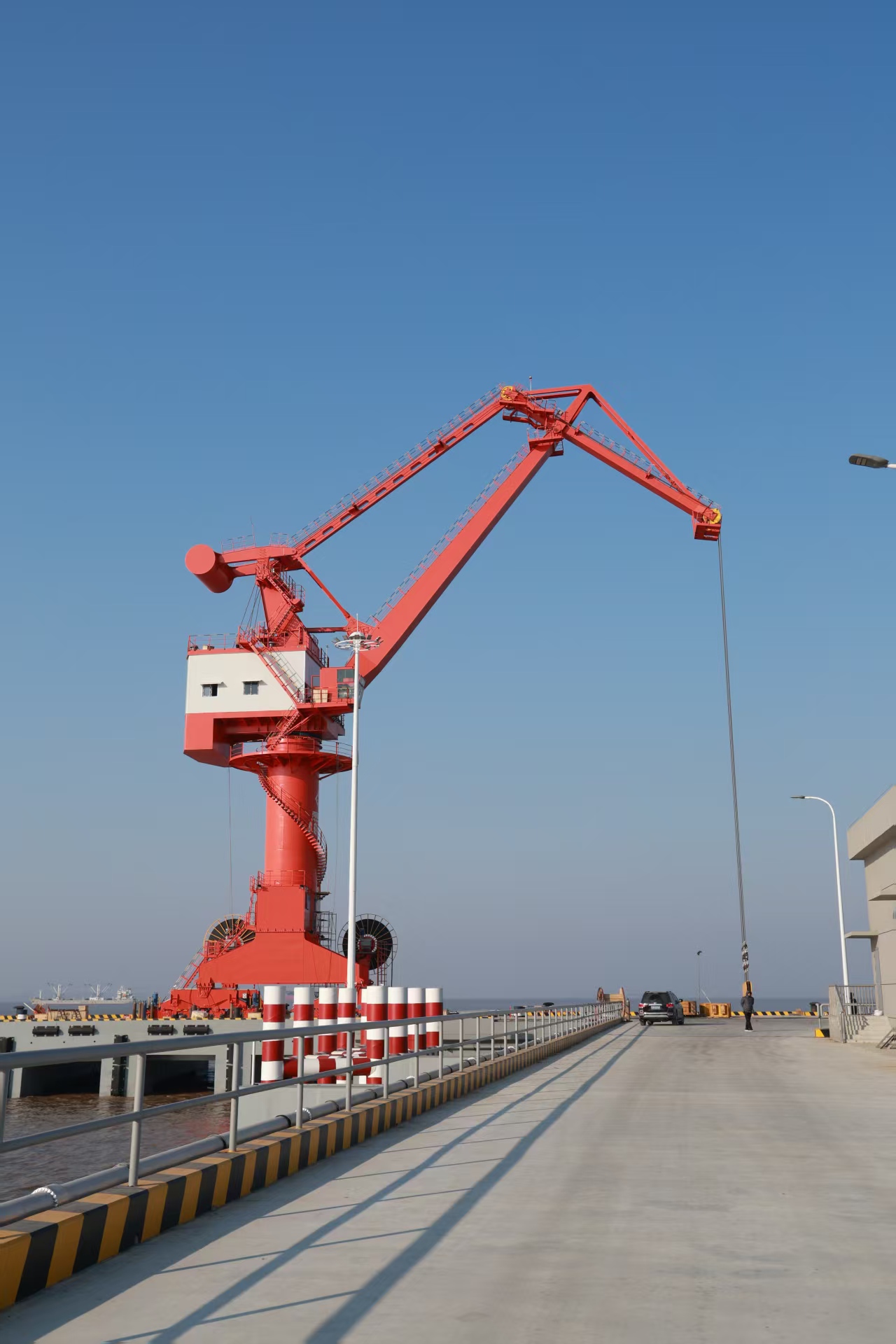
Step 3: Adapt to port environments to extend equipment lifespan
Port environments characterized by high temperatures, high humidity, salt fog, and strong winds pose significant durability challenges for gantry cranes. Equipment selection must prioritize targeted protective measures.
Wind resistance: Three-tier protection system
Operational wind protection: Equipped with automatic track clamps + anchoring devices, which automatically activate when wind speeds ≤16 m/s (8-beaufort wind), ensuring equipment stability during operations.
Wind resistance in non-operational state: Combination of 8-point anchoring + wind-resistant guy wires, capable of withstanding winds of ≥25 m/s (10-level wind) to prevent equipment displacement.
Emergency warning: Install a wind speed warning device that automatically alarms and cuts off power 30 minutes before reaching 10-level wind conditions, alerting operators to evacuate promptly.
Corrosion protection: Dual protection with all-metal and electrical systems
Metal structure: Utilizes a composite corrosion-resistant coating comprising “sandblasting rust removal (Sa3 grade) + epoxy zinc-rich primer (80μm) + chlorinated rubber topcoat (120μm).” Critical hinge pins and shafts are made of 316 stainless steel, and bolts undergo Darco treatment, ensuring no significant corrosion in a salt spray environment for five years.
Electrical system: Electrical cabinets are equipped with temperature-controlled dehumidification devices (temperature range: 5–40°C, humidity ≤60%). Motor bearings are filled with lifetime lubricating grease (suitable for temperatures from -30°C to 80°C), ensuring stable operation in both tropical ports and northern freezing ports.
Step 4: Evaluate service support to reduce “hidden costs”
The lifecycle of a portal crane spans 15–20 years, and a comprehensive service system can significantly reduce operational costs:
Localized service capabilities: Select brands with service stations within 500 kilometers of the port to ensure a response time of ≤4 hours for faults, with sufficient inventory of common spare parts (such as brake linings and hydraulic valves), and replacement completed within 24 hours.
Customized training: Suppliers must provide targeted training—for bulk cargo operations, focus on training in grab unloading angle control; for heavy-lift operations, emphasize low-speed maneuvering techniques—to ensure that 80% of operators pass practical assessments.
Intelligent maintenance system: Equip the crane with a health management platform that remotely monitors the status of critical components via vibration and temperature sensors, providing early warnings of potential faults (e.g., abnormal bearing temperature increases), and reducing unplanned downtime by over 50%.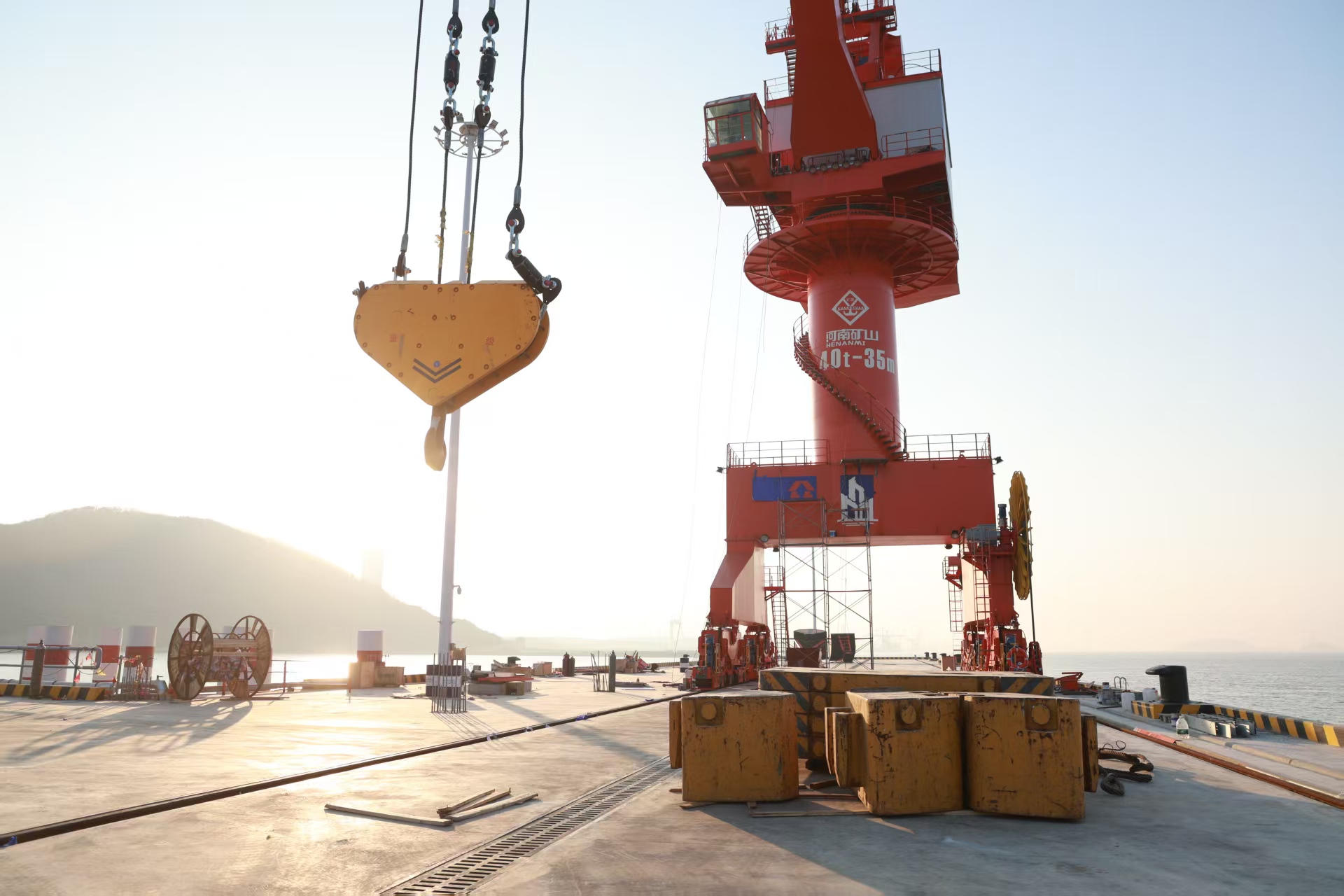
Henan Mining: The Scene Customization Expert for Portal Cranes
As a company with over 20 years of experience in the port crane equipment industry, Henan Mining deeply understands the operational pain points of different ports and can provide customized solutions for portal cranes ranging from 5 tons to 200 tons:
Specialized models for bulk cargo terminals: Equipped with a 30m³ ultra-large grab and an intelligent material volume statistics system, achieving a ship unloading efficiency of 3,000 tons per hour at Tianjin Port, a 25% improvement over the industry average.
Specialized cranes for heavy-duty cargo: Utilizing variable-reach mechanisms licensed from German manufacturer Liebherr, these cranes achieved positioning accuracy of ±3mm during the lifting of 180-ton wind power equipment at Yantai Port, with zero-fault operation exceeding 1,200 hours.
All-scenario Adaptive Solution: A custom-designed multi-functional gantry crane for Ningbo Port enables one-click switching between bulk cargo, container, and general cargo modes, boosting overall operational efficiency by 30% and saving over 500,000 yuan in annual energy costs.
Choosing a gantry crane is essentially choosing an efficiency solution tailored to port development. Henan Mining focuses on scenario-based design and full-cycle service, ensuring that every gantry crane becomes an engine for port efficiency improvement, helping you gain a competitive edge in the intense port competition. If you would like to learn more about customization details, please feel free to contact our technical team to obtain a customized selection plan.
